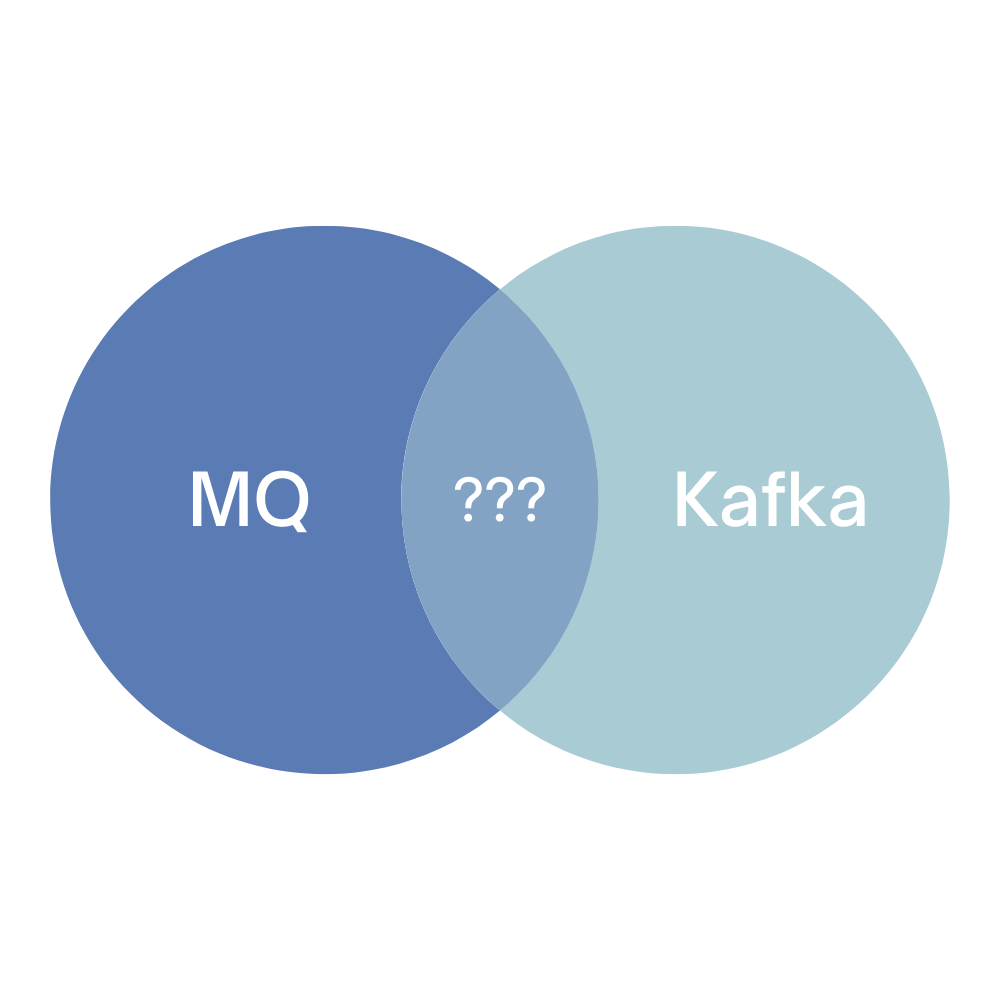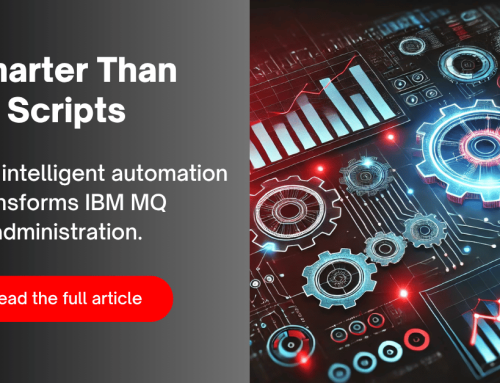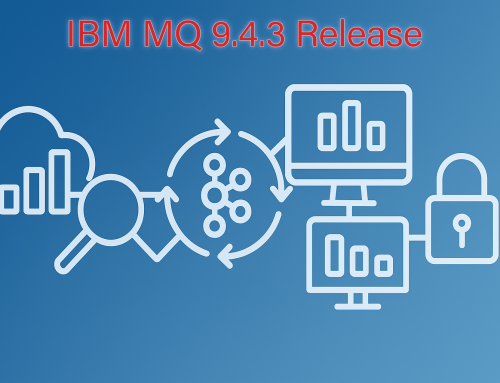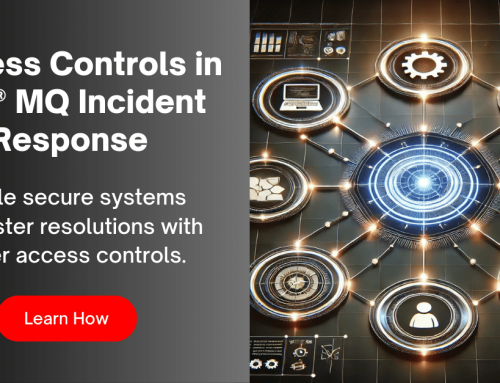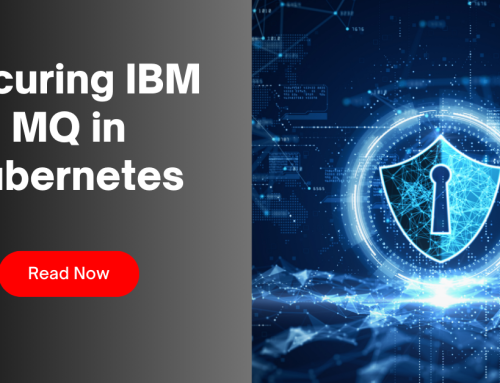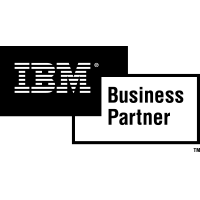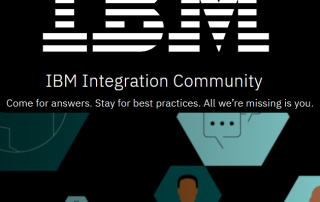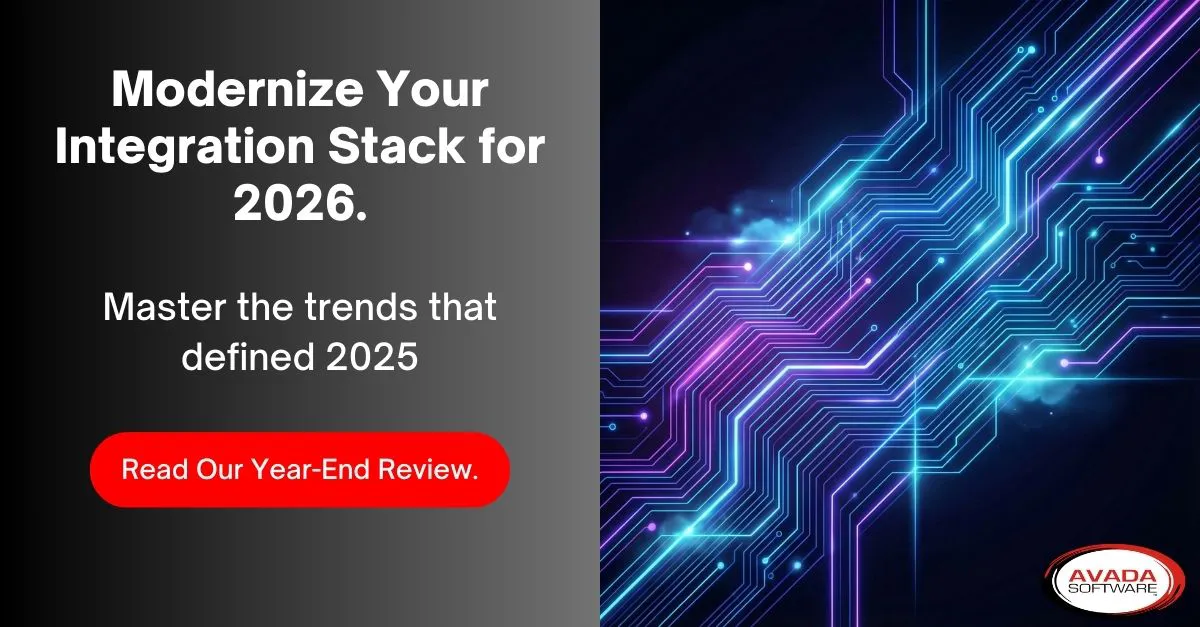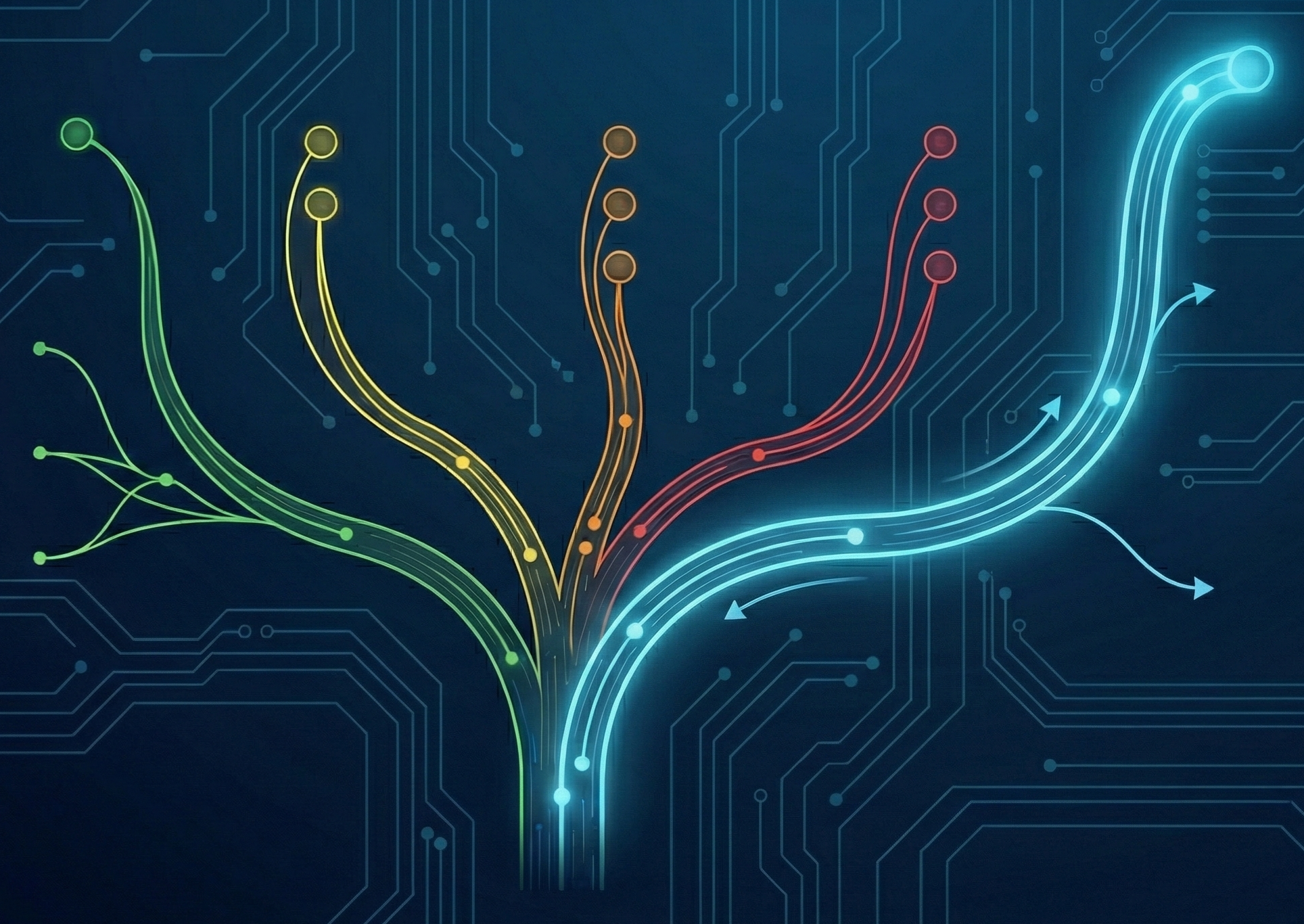Understanding MQ vs Kafka: How They Differ and Work Together
This blog post will explore the key differences and similarities between two leading messaging solutions: MQ and Kafka. We will examine their unique features and use cases and how they can work together to create robust, real-time data processing systems. Additionally, we will discuss the importance of effectively monitoring and managing both technologies to ensure optimal performance.
Businesses that rely on efficient, reliable messaging systems must understand how to integrate MQ and Kafka. Both technologies offer distinct advantages and serve different purposes, yet their integration can enhance overall system capabilities. By understanding MQ and Kafka clearly, organizations can make informed decisions about which technology to use for specific applications, ensuring seamless communication and data processing across their IT environments.
What is MQ?
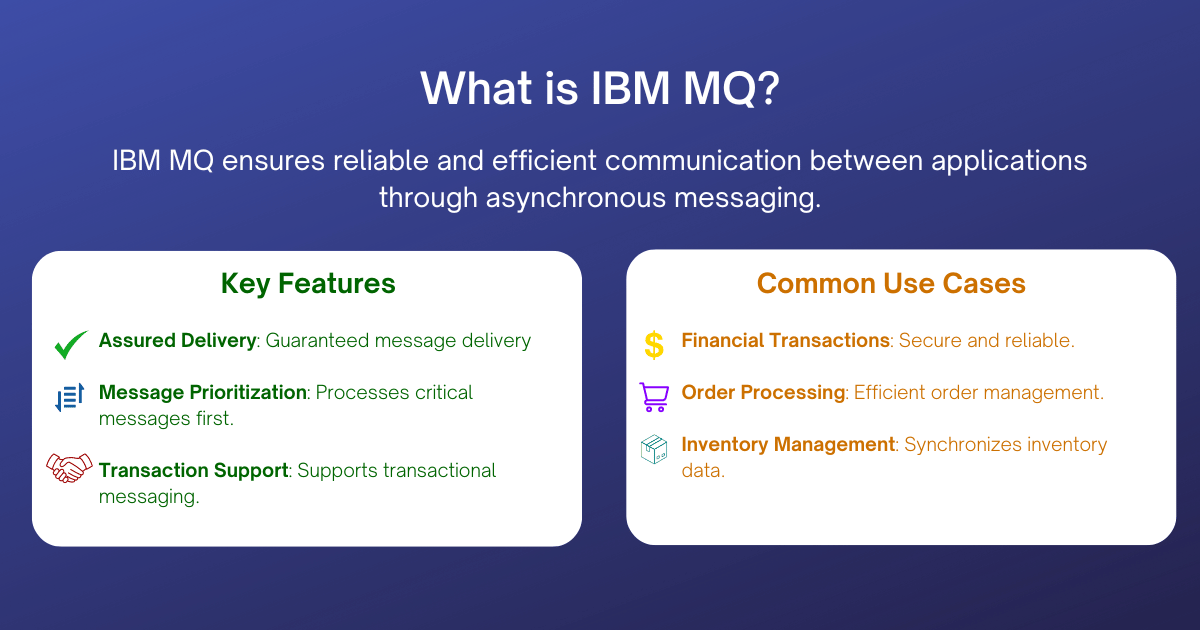
IBM MQ is a messaging solution designed to facilitate communication between applications. By sending and receiving messages through a queue, MQ ensures that messages are delivered reliably and efficiently, regardless of the state of the receiving application. This asynchronous communication model allows applications to function independently, improving system resilience and scalability.
Key Features
- Assured Delivery: MQ guarantees that messages are delivered to the intended recipient, ensuring data integrity and reliability. This feature is crucial for applications that require strict data consistency and fault tolerance.
- Message Prioritization: MQ prioritizes messages, ensuring that critical messages are processed before less important ones. This prioritization helps manage the flow of messages efficiently, particularly in high-load scenarios.
- Transaction Support: MQ supports transactional messaging, allowing you to send and receive messages within a transaction. If a transaction fails, MQ returns all associated messages, ensuring no partial data is processed.
Common Use Cases
- Financial Transactions: MQ is widely used in financial systems to handle transactions securely and reliably. It ensures that transaction messages are processed in the correct order and without loss, which is vital for maintaining financial integrity.
- Order Processing: MQ actively facilitates order processing in e-commerce and supply chain management by queuing and systematically processing orders. This systematic processing helps businesses manage high order volumes efficiently, even during peak times.
- Inventory Management: MQ synchronizes inventory data across multiple systems, reliably communicating inventory updates to help businesses maintain accurate stock levels and avoid discrepancies.
By leveraging these features, MQ enables robust communication between distributed applications, making it an essential tool in modern IT environments.
Let’s transition from traditional message queuing to Apache Kafka, another significant player in messaging and event streaming.
What is Kafka?

Apache Kafka is a distributed event streaming platform designed to handle high-throughput data streams and provide real-time analytics. Unlike traditional message queues, Kafka’s architecture is optimized for scaling horizontally and managing large volumes of data with minimal latency, making it a preferred choice for modern data-driven applications.
Key Features
- High Throughput: Kafka can process millions of messages per second, making it suitable for applications that require rapid data ingestion and processing. Its efficient design ensures high data throughput is maintained even under heavy load.
- Scalability: Kafka’s distributed architecture allows it to scale horizontally by adding more brokers to the cluster. This scalability ensures that Kafka can handle increasing data volumes and maintain performance as the system grows.
- Fault Tolerance: Kafka’s replication mechanism ensures data reliability. Kafka replicates messages across multiple brokers, so if one broker fails, other brokers can still access the data. This fault tolerance is critical for maintaining continuous data flow and avoiding loss.
Common Use Cases
- Real-time Analytics: Kafka is extensively used for real-time analytics, enabling organizations to process and analyze data as it arrives. This capability is essential for applications like fraud detection, where immediate insights are necessary.
- Log Aggregation: Kafka efficiently aggregates logs from various systems, allowing centralized analysis and monitoring. This centralized log management helps identify and resolve issues quickly, improving system reliability.
- Stream Processing: Kafka’s ability to handle continuous data streams makes it ideal for stream processing applications. Integrating with stream processing frameworks like Apache Flink or Kafka Streams enables real-time data transformations and enrichments.
Kafka’s robust features and capabilities, such as its high throughput, scalability, and real-time processing, make it a powerful tool for managing data streams. This combination of features provides significant advantages in handling large-scale data processing tasks.
Organizations can build comprehensive and resilient data architectures by leveraging Kafka alongside MQ. However, it’s essential to understand the differences between the two technologies.
Differences Between MQ and Kafka

Architecture
The architectural designs of MQ and Kafka reflect their distinct operational models. MQ follows a point-to-point architecture, where messages are sent from a producer to a specific consumer through a queue. This model ensures that each message is processed by only one consumer, making it ideal for tasks requiring strict order and reliability.
In contrast, Kafka employs a publish-subscribe (pub-sub) model, where producers send messages to topics, and multiple consumers can subscribe to these topics to receive the messages. This architecture supports high throughput and allows for various consumers’ parallel processing of messages, making Kafka suitable for real-time data streaming and large-scale data processing.
Message Delivery and Processing
MQ guarantees message delivery, ensuring each message reaches its intended recipient exactly once. This feature is crucial for applications where businesses and developers cannot tolerate message loss or duplication. MQ’s transactional support further enhances its reliability by allowing users to include messages as part of a transaction they can commit or roll back as a single unit.
Kafka, on the other hand, focuses on throughput and scalability. It uses a log-based storage mechanism where messages are stored in a distributed log and consumed by reading from these logs. Kafka does not guarantee exactly-once delivery by default but offers at least-once and exactly-once semantics with additional configuration. This flexibility allows Kafka to handle massive data ingestion and real-time processing effectively.
Scalability
Kafka’s design inherently supports high scalability. By distributing data across multiple brokers and partitions, Kafka can handle increasing data volumes and consumer demands without compromising performance. This horizontal scalability makes Kafka an excellent choice for applications with high data throughput requirements.
While MQ can also scale, it typically requires more effort to achieve the same level of scalability as Kafka. MQ’s point-to-point model can become a bottleneck in scenarios with high message volumes, necessitating careful architecture planning and resource management to maintain performance.
Use Cases
The differences in architecture, message delivery, and scalability between MQ and Kafka make them suitable for different use cases:
- MQ: Ideal for applications requiring guaranteed message delivery, such as financial transactions, order processing, and inventory management. Its reliability and transaction support make it well-suited for scenarios where data consistency and integrity are paramount.
- Kafka: Best for real-time analytics, log aggregation, and stream processing. Kafka’s high throughput and scalability make it a powerful tool for handling large-scale data ingestion and processing tasks, providing immediate insights and enabling real-time decision-making.
Understanding these differences helps organizations choose the right tool for their needs, ensuring efficient and reliable data communication and processing. Despite these differences, MQ and Kafka share similarities, making them complementary technologies in many scenarios.
Similarities Between MQ and Kafka
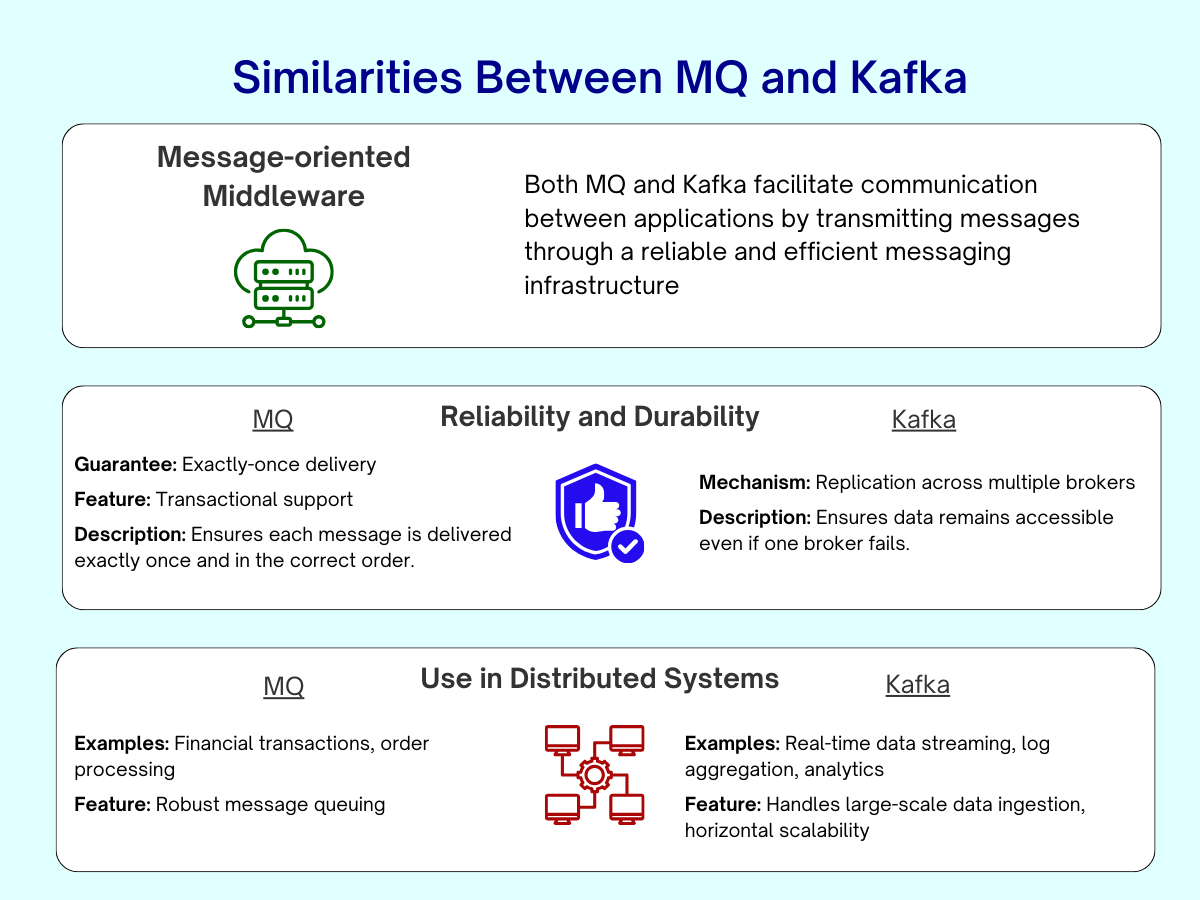
Message-oriented Middleware
Both MQ and Kafka serve as robust messaging solutions within distributed systems. They facilitate communication between various applications and services by transmitting messages through a reliable and efficient messaging infrastructure. This capability is crucial in modern IT environments, where system components must interact seamlessly to perform complex tasks.
Reliability and Durability
Reliability and durability are paramount in MQ and Kafka. Both technologies ensure that messages are not lost and can be delivered even during failures.
- MQ guarantees message delivery and offers transactional support. It ensures that each message is delivered exactly once and in the correct order, which is particularly important for applications that require stringent data consistency and fault tolerance.
- Kafka achieves reliability through its replication mechanism, replicating messages across multiple brokers. This replication ensures that even if one broker fails, the data remains accessible, maintaining the durability of messages within the system.
Use in Distributed Systems
MQ and Kafka are integral to the operation of distributed systems. They enable different services and applications to communicate and exchange data efficiently, supporting the overall architecture of complex systems.
- MQ is often used in scenarios requiring assured message delivery, such as financial transactions and order processing. Its robust message queuing capabilities ensure that messages are processed reliably, even in distributed environments.
- Organizations primarily use Kafka for real-time data streaming and processing, log aggregation, and analytics. Its ability to handle large-scale data ingestion and horizontal scalability make it ideal for distributed systems that process and analyze data in real time.
Both technologies play a crucial role in microservices and event-driven architectures, enabling the decoupling of services and the efficient processing of events.
By understanding these similarities, organizations can leverage the strengths of both MQ and Kafka to build robust, reliable, and scalable messaging infrastructures.
Using MQ and Kafka together can create a more resilient and versatile system, combining the guaranteed delivery of MQ with the high throughput and scalability of Kafka!
How MQ and Kafka Work Together
Integration Scenarios
Integrating MQ and Kafka leverages both technologies’ strengths to create robust and scalable messaging solutions. Using MQ for transactional messages ensures guaranteed delivery and precise message sequencing, which is essential for applications that demand reliability and accuracy. Meanwhile, Kafka excels in real-time data streaming, allowing for high-throughput data ingestion and immediate analytics.
For example, an e-commerce platform can use MQ to handle core transaction messages such as order confirmations and payment processing, ensuring accurate and reliable completion of each step. Simultaneously, Kafka can stream these transaction events to a data analytics platform, enabling real-time monitoring of sales trends and customer behavior.
Benefits of Using Both Technologies
Leveraging the strengths of both MQ and Kafka provides several key benefits:
- Enhanced Agility and Responsiveness: By combining MQ’s reliability with Kafka’s real-time data processing capabilities, businesses can respond more quickly to changing conditions and customer needs.
- Comprehensive Data Insights: Integrating MQ and Kafka allows seamless data flow between transactional systems and analytics platforms, providing a holistic view of business operations.
- Scalability and Flexibility: Kafka’s ability to handle high data volumes complements MQ’s transactional integrity, making it easier to scale systems and adapt to varying workloads.
Real-world Examples
Many companies have successfully integrated MQ and Kafka to optimize their operations:
- Financial Services: A central bank uses MQ for secure transaction processing, while Kafka streams transaction data to an analytics engine for fraud detection. This setup ensures transaction integrity while enabling real-time analysis of potential fraud patterns.
- E-commerce: An online retailer employs MQ for order processing and inventory management, accurately completing each transaction. Kafka streams the order data to a recommendation engine, providing real-time personalized product suggestions to customers.
- Telecommunications: A telecom provider uses MQ to manage billing and customer service transactions, while Kafka handles real-time network monitoring data. This integration helps maintain accurate billing records and provides insights into network performance for proactive issue resolution.
Example: Inventory Optimization
Integrating MQ and Kafka can allow organizations to enable targeted, real-time promotions. For example, MQ handles standard order processing, ensuring accurate logging of each customer order. Simultaneously, a streaming queue replicates these order events into Kafka, where real-time analytics identify high-value orders and new customer activity. This identification allows the marketing team to send targeted promotions to these customers, enhancing engagement and driving sales.
Understanding and implementing these integration strategies allows businesses to harness the combined power of MQ and Kafka to build responsive, data-driven systems that meet the demands of today’s fast-paced world. However, managing and monitoring MQ and Kafka is critical to ensure seamless operation and maximum benefit from these integrated systems
Importance of Monitoring and Managing MQ and Kafka
Challenges in Managing Both Technologies
Managing MQ and Kafka presents several complexities due to their distinct architectures and operational models. MQ’s point-to-point architecture requires meticulous attention to message delivery guarantees, transaction integrity, and the orderly processing of messages. Ensuring that each message is delivered exactly once and maintaining the sequence of messages can be challenging, especially in high-volume environments.
On the other hand, Kafka’s distributed pub-sub model demands robust management of data streams, replication, and partitioning. Kafka’s scalability and high-throughput capabilities necessitate constant monitoring to avoid bottlenecks and ensure efficient data flow across the system. Additionally, integrating Kafka with other systems and managing data retention policies add layers of complexity.
Key Metrics to Monitor

To maintain optimal performance and reliability, you should monitor critical metrics for both MQ and Kafka:
- Throughput: Measure the rate at which messages are produced and consumed. High throughput is crucial for Kafka, while MQ also benefits from monitoring message flow rates to prevent bottlenecks.
- Latency: Track the time taken for messages to be delivered and processed. Low latency is vital for real-time applications, ensuring timely data availability.
- Message Queue Depth: Monitor the number of messages in the queue. A growing queue depth in MQ can indicate processing delays, while in Kafka, it might suggest issues with consumer lag.
- Consumer Lag: Monitor the lag between message production and consumption for Kafka. High consumer lag can lead to delayed data processing and potential system bottlenecks.
- Error Rates: Track the rate of message delivery failures and processing errors. High error rates in MQ or Kafka can indicate issues that need immediate attention to maintain system reliability.
- Resource Utilization: Monitor MQ and Kafka servers’ CPU, memory, and disk usage. Efficient resource utilization is critical to prevent performance degradation and ensure scalability.
Importance of Unified Management Tools
Unified management tools are essential for monitoring and managing MQ and Kafka environments. These tools provide a comprehensive view of your messaging infrastructure, offering real-time insights and analytics to ensure smooth operation.
Key benefits of unified management tools include:
- Centralized Monitoring: A single platform to monitor MQ and Kafka, simplifying the management process and reducing the risk of overlooking critical metrics.
- Proactive Alerts: Real-time alerts for potential issues, enabling quick response and resolution before they impact system performance.
- Performance Optimization: Insights and analytics to identify performance bottlenecks and optimize resource allocation, ensuring efficient operation.
- Enhanced Visibility: Segmented role access allows different teams (DevOps, admins, support) to view relevant data, facilitating collaboration and efficient troubleshooting.
- Simplified Integration: Streamline the integration of MQ and Kafka, ensuring seamless data flow and reducing the complexity of managing interconnected systems.
Effective monitoring and management of MQ and Kafka are crucial for maintaining your messaging infrastructure’s reliability, performance, and scalability.
Next, let’s explore how Infrared360 helps streamline the management and monitoring of MQ and Kafka, enhancing these integrated systems’ overall efficiency and effectiveness.
How Infrared360® Helps with MQ and Kafka
Infrared360 is a powerful, agentless monitoring and administration tool designed to simplify and enhance the management of both MQ and Kafka environments. Key features include:
- Agentless Monitoring: Infrared360 provides comprehensive monitoring without installing agents on each server, reducing overhead and simplifying deployment.
- Cloud-Based Access: The platform offers cloud-based access, allowing administrators to monitor and manage their messaging environments from anywhere, ensuring constant oversight.
- Segmented Role Visibility: Infrared360® offers role-based access controls, ensuring that different teams can access the specific data and tools they need without compromising security.
Benefits of Using Infrared360 for MQ and Kafka Management
Using Infrared360® for managing MQ and Kafka provides several benefits:
- Ease of Management: The intuitive interface and comprehensive features make it easier to manage complex messaging environments.
- Real-Time Monitoring: Infrared360® delivers real-time insights and alerts, enabling proactive issue resolution and minimizing downtime.
- Comprehensive Insights: Advanced analytics and reporting tools help administrators understand system performance and identify areas for improvement.
Concluding Thoughts
MQ and Kafka offer distinct yet complementary features that make them valuable for various messaging and data streaming needs. MQ ensures reliable, transactional message delivery, making it ideal for applications where data consistency and fault tolerance are critical. With its high throughput and scalability, Kafka is well-suited for real-time analytics, log aggregation, and stream processing.
Both technologies are crucial in modern IT environments. They enable robust communication between distributed systems and support microservices and event-driven architectures. Integrating MQ and Kafka allows organizations to leverage both strengths, creating a more resilient and versatile messaging infrastructure.
Effective monitoring and management of MQ and Kafka are essential to maintaining their performance, reliability, and scalability. Unified management tools like Infrared360 can provide comprehensive insights, real-time alerts, and optimized resource allocation, ensuring the smooth operation of these complex systems.
We invite you to learn more about our solutions and services and explore how Infrared360 can enhance your management of MQ and Kafka or consult with IBM MQ experts.
Engage with Infrared360!
Take the first step towards optimizing your messaging environment and ensuring your infrastructure’s health and efficiency.
More Infrared360® Resources
